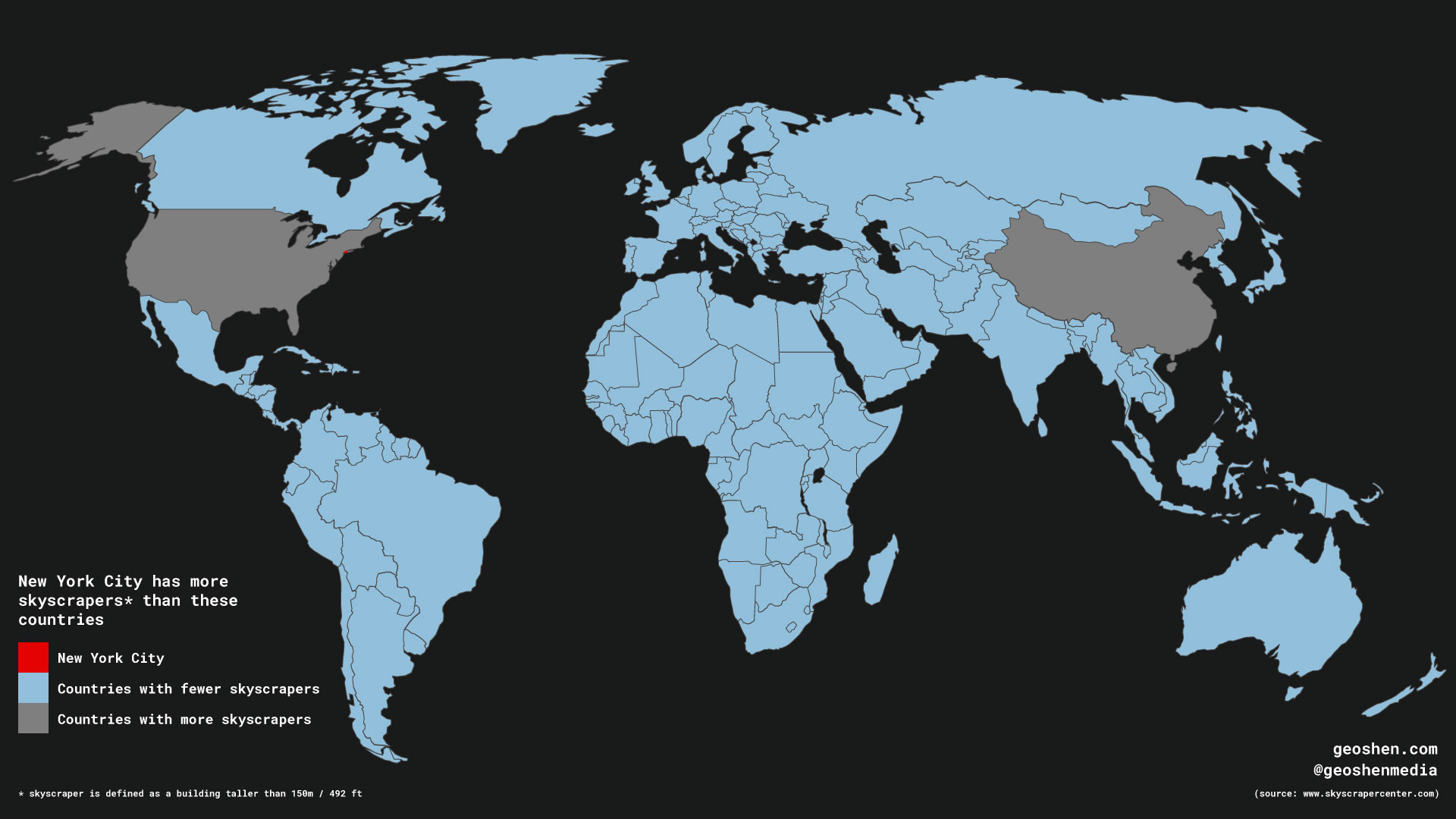A skyscraper is defined as a "relatively tall building of many stories, especially one for office or commercial use." In other words, skyscrapers are tall multistory buildings that are at least 150 meters / 492 feet tall (but some people set the lower limit to 100 meters / 328 feet) and must be continuously inhabited. Another key characteristic of a skyscraper is that it's built using a steel frame. These qualities exclude many older structures from being considered skyscrapers like the massive Egyptian pyramids and the towering European cathedrals, which were not completely inhabitable and were not built using steel.
But what defines a skyscraper can change over time. The first building to be considered a skysraper is the Home Insurance Building built in Chicago in 1885. But it had only 10 floors and reached a height of 42 meters (138 feet), which would fall way short of the 150 meters that many people consider the minimum height for today's skyscrapers. And the Home Insurance Building wasn't anywhere close to being the tallest structure after its completion. It was dwarfed by pyramids like the Pyramid of Giza (146 meters / 479 feet) and cathedrals like the Lincoln Cathedral (160 meters / 520 feet). Nonetheless the Home Insurance Building set in motion a new kind of building. Its steel frame construction, which was incredibly strong but light-weight, made it both possible and practical to construct habitable buildings of heights unimaginable to the ancients.
For most of the 20th century, it was New York City that led the world in the construction of skyscrapers. Chicago may have built the world's first skyscraper, but it was New York City that became ground zero for skyscrapers. From the Singer Building (186.6 meters / 612 feet) to the Empire State Building (381 meters / 1,250 feet) to the World Trade Center (417 meters / 1,368 feet) and everything in between, New York City filled its grounds with countless skyscrapers and laid claim to having the tallest buildings in the world from 1908 to 1974. New York City was the city of skyscrapers and its imposing skyline became a popular symbol of American engineering ingenuity and economic strength.
But some of New York City's glory has faded since the late 20th century. It lost the mantle of having the tallest building in the world when Chicago built Sears Tower (442.1 meters / 1,450 feet) in 1974, and New York City hasn't reclaimed it since and won't likely anytime soon. In fact, New York City now has only one building in the list of 10 tallest buildings in the world. And relatively speaking, New York City isn't building very much in general anymore. Construction of most skyscrapers now happen in cities like Shanghai, Dubai, and Toronto.
Nonetheless, New York City still arguably has the world's best collection of skyscrapers in terms of numbers, quality, and style. Its only rivals in this regard are Hong Kong and Shanghai. Although New York City doesn't build as many skyscrapers as it use to, that's because New York City already has a ton of them. It has more skyscrapers than most entire countries. In fact, every country outside the United States has fewer skyscrapers than New York City with the exception of China.
NYC and Top 10 countries with skyscrapers or buildings taller than 150 meters (492 feet)
| Rank | Country | Total |
| 1 | China | 1,767 |
| 2 | United States | 758 |
| 3 | New York City | 264 |
| 4 | Japan | 242 |
| 5 | United Arab Emirates | 233 |
| 6 | South Korea | 214 |
| 7 | Australia | 102 |
| 8 | Canada | 94 |
| 9 | Indonesia | 88 |
| 10 | Singapore | 84 |
| 11 | Philippines | 78 |
